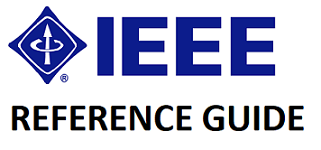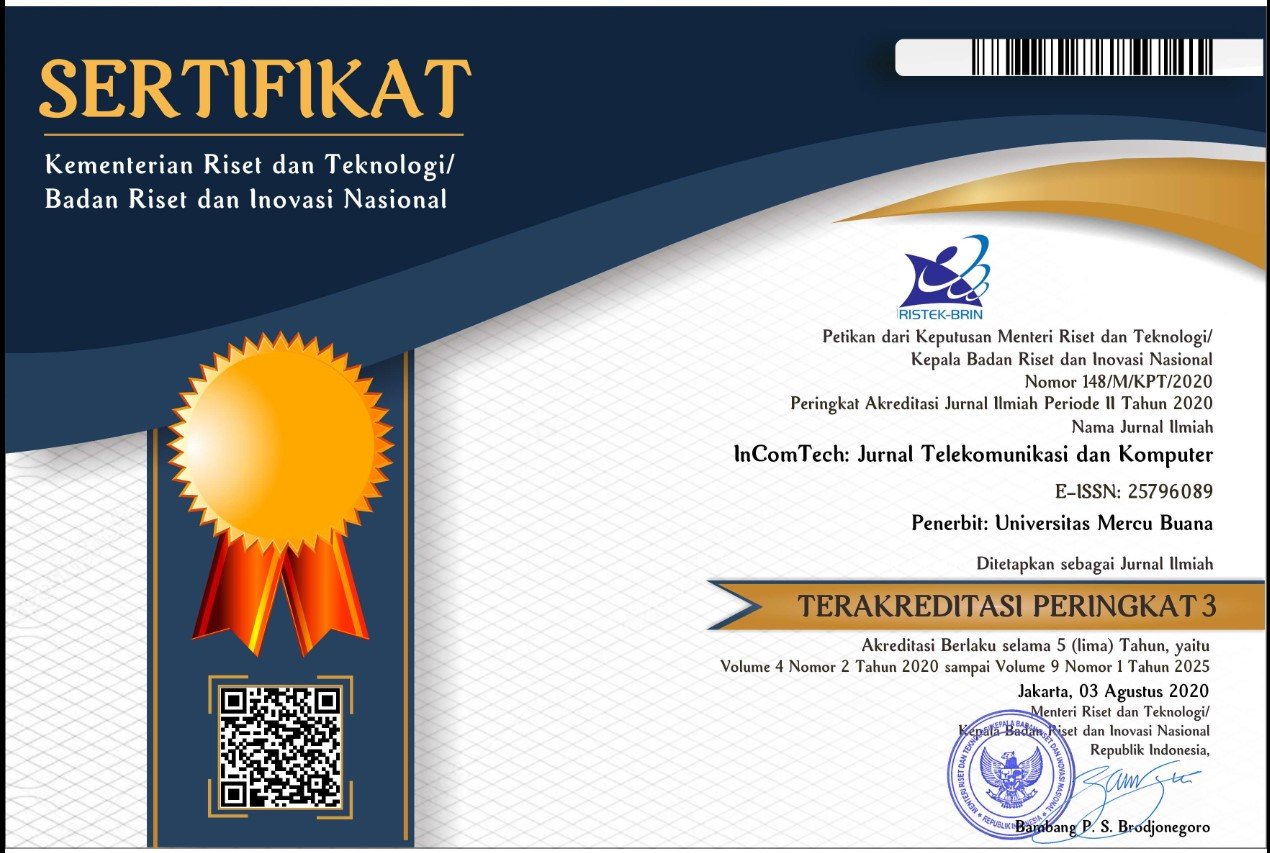Comparison of 920 MHz and 2.4 GHz Near Ground Electromagnetic Wave Pathloss Propagation Model for Wireless Sensor Network in Forest Environment Application
Abstract
A Wireless Sensor Network (WSN) system that uses wireless communication technologies occasionally experiences data loss when undertaking wireless data communication. This problem happens because of the WSN system being placed on top of the ground and surrounded by vegetation that adds more loss to the transmission. In order to avoid this problem, the wireless system design must meet its best performance. To build the best performing WSN system, electromagnetic wave behavior in the forest environment needs to be studied well. This paper investigates the electromagnetic wave behavior transmitted and propagated by a WSN node at less than 30 cm from the ground using a 920 MHz frequency. We have analyzed that low height (30 cm) and vegetation environments can also add more loss at about 30.96 dB to the free space pathloss model. The new 920 MHz (that adds 30.96 dB loss) model shows identical behavior to 2.4 GHz with an average difference of 12.24 dB. However, the 920 MHz model performs better, achieving an average RMSE of 1.06 compared with the 2.4 GHz model, which can only achieve an average RMSE of 4.92 compared with the 920 MHz measurement.
Keywords
Full Text:
PDFReferences
ITU-T, “Recommendation ITU-T Y.2221: Requirements for Support of Ubiquitous Sensor Network (USN) Applications and Services in the NGN Environment.” p. 32, 2010.
C. Del-Valle-Soto, C. Mex-Perera, J. A. Nolazco-Flores, R. Velázquez, and A. Rossa-Sierra, “Wireless sensor network energy model and its use in the optimization of routing protocols,” Energies, vol. 13, no. 3, pp. 1–33, 2020, doi: 10.3390/en13030728.
N. Sharmin, A. Karmaker, W. L. Lambert, M. S. Alam, and M. S. T. S. A. Shawkat, “Minimizing the energy hole problem in wireless sensor networks: A wedge merging approach,” Sensors (Switzerland), 2020, doi: 10.3390/s20010277.
J. Lee, Z. Zhong, B. Du, S. Gutesa, and K. Kim, “Low-cost and energy-saving wireless sensor network for real-time urban mobility monitoring system,” J. Sensors, 2015, doi: 10.1155/2015/685786.
J. Chen, S. Li, S. H. G. Chan, and J. He, “WIANI: Wireless infrastructure and Ad-hoc network integration,” IEEE Int. Conf. Commun., 2005, doi: 10.1109/icc.2005.1495092.
M. Hefeeda and M. Bagheri, “Wireless sensor networks for early detection of forest fires,” in 2007 IEEE Internatonal Conference on Mobile Adhoc and Sensor Systems, MASS, 2007, doi: 10.1109/MOBHOC.2007.4428702.
M. S. Jamil, M. A. Jamil, A. Mazhar, A. Ikram, A. Ahmed, and U. Munawar, “Smart Environment Monitoring System by Employing Wireless Sensor Networks on Vehicles for Pollution Free Smart Cities,” in Procedia Engineering, 2015, doi: 10.1016/j.proeng.2015.06.106.
M. Sohail, S. Khan, R. Ahmad, D. Singh, and J. Lloret, “Game theoretic solution for power management in iot-based wireless sensor networks,” Sensors (Switzerland), vol. 19, no. 18, pp. 1–20, 2019, doi: 10.3390/s19183835.
N. Azmi et al., “Interference issues and mitigation method in WSN 2.4GHz ISM band: A survey,” 2014 2nd Int. Conf. Electron. Des. ICED 2014, 2011, doi: 10.1109/ICED.2014.7015839.
Y. Yun and Y. Xia, “Maximizing the lifetime of wireless sensor networks with mobile sink in delay-tolerant applications,” IEEE Trans. Mob. Comput., vol. 9, no. 9, pp. 1308–1318, 2010, doi: 10.1109/TMC.2010.76.
A. Akbas, H. U. Yildiz, B. Tavli, and S. Uludag, “Joint Optimization of Transmission Power Level and Packet Size for WSN Lifetime Maximization,” IEEE Sens. J., vol. 16, no. 12, pp. 5084–5094, 2016, doi: 10.1109/JSEN.2016.2548661.
R. A. Uthra and S. V. K. Raja, “QoS routing in wireless sensor networks-A survey,” ACM Comput. Surv., vol. 45, no. 1, pp. 1–12, 2012, doi: 10.1145/2379776.2379785.
Y. Huang, D. Xu, J. Kan, and W. Li, “Study on field experiments of forest soil thermoelectric power generation devices,” PLoS One, 2019, doi: 10.1371/journal.pone.0221019.
Mulyadi and R. W. Arsianti, “Low Power Electrical Generator from Soil Microbial Fuel Cell,” 2018 Electr. Power, Electron. Commun. Control. Informatics Semin. EECCIS 2018, 2018, doi: 10.1109/EECCIS.2018.8692948.
Y. Y. Choo and J. Dayou, “A Method to Harvest Electrical Energy from Living Plants,” J. Sci. Technol., 2013, doi: 10.1109/19.387319.
X. Gao, W. H. Shih, and W. Y. Shih, “Flow energy harvesting using piezoelectric cantilevers with cylindrical extension,” IEEE Trans. Ind. Electron., 2013, doi: 10.1109/TIE.2012.2187413.
A. Wahab, F. A. Mustika, R. B. Bahaweres, D. Setiawan, and M. Alaydrus, “Energy efficiency and loss of transmission data on Wireless Sensor Network with obstacle,” Proceeding 2016 10th Int. Conf. Telecommun. Syst. Serv. Appl. TSSA 2016 Spec. Issue Radar Technol., 2017, doi: 10.1109/TSSA.2016.7871084.
L. Mottola and G. Pietro Picco, “MUSTER: Adaptive energy-aware multisink routing in wireless sensor networks,” IEEE Trans. Mob. Comput., 2011, doi: 10.1109/TMC.2010.250.
G. S. Brar, S. Rani, V. Chopra, R. Malhotra, H. Song, and S. H. Ahmed, “Energy efficient direction-based PDORP routing protocol for WSN,” IEEE Access, 2016, doi: 10.1109/ACCESS.2016.2576475.
R. Bria, A. Wahab, and M. Alaydrus, “Energy Efficiency Analysis of TEEN Routing Protocol with Isolated Nodes,” Proc. 2019 4th Int. Conf. Informatics Comput. ICIC 2019, 2019, doi: 10.1109/ICIC47613.2019.8985668.
G. Lukachan and M. A. Labrador, “SELAR: Scalable Energy-efficient Location Aided Routing protocol for wireless sensor networks,” Proc. - Conf. Local Comput. Networks, LCN, pp. 694–695, 2004, doi: 10.1109/LCN.2004.111.
B. Majone et al., “Wireless Sensor Network Deployment for Monitoring Soil Moisture Dynamics at the Field Scale,” Procedia Environ. Sci., 2013, doi: 10.1016/j.proenv.2013.06.049.
Kementerian Komunikasi Dan Informatika Republik Indonesia, Peraturan Menteri Komunikasi Dan Informatika Republik Indonesia Nomor 1 Tahun 2019 Tentang Penggunaan Spektrum Frekuensi Radio Berdasarkan Izin Kelas. 2019.
G. P. N. Hakim, M. Alaydrus, and R. B. Bahaweres, “Empirical approach of ad hoc path loss propagation model in realistic forest environments,” Proceeding - 2016 Int. Conf. Radar, Antenna, Microwave, Electron. Telecommun. ICRAMET 2016, 2017, doi: 10.1109/ICRAMET.2016.7849600.
N. N. N. B. Jefri, K. Anuar, and S. Arjunan, “Real time indoor measurement of 2G, 3G and LTE mobile networks in Malaysia,” in 2016 IEEE 3rd International Symposium on Telecommunication Technologies, ISTT 2016, 2017, doi: 10.1109/ISTT.2016.7918078.
Semtech, “Datasheet SX1276/77/78/79 - 137 MHz to 1020 MHz Low Power Long Range Transceiver,” 2020.
T. Chrysikos, S. Kotsopoulos, and E. Babulak, “A Generic method for the reliable calculation of large-scale fading in an obstacle-dense propagation environment,” in Integrated Models for Information Communication Systems and Networks: Design and Development, 2013.
Y. Huang and K. Boyle, Antennas: From Theory to Practice. John Wiley & Sons Ltd, 2008.
H. T. Friis, “A Note on a Simple Transmission Formula,” Proc. IRE, vol. 34, no. 5, pp. 254–256, 1946, doi: 10.1109/JRPROC.1946.234568.
Y. Peng, U. He, and J. Choi, “Wireless Sensing and Propagation Characterization for Smart Greenhouses,” in The 2012 International Workshop on Internet of Things (IOT Workshop 2012), 2012.
DOI: http://dx.doi.org/10.22441/incomtech.v12i2.14186

This work is licensed under a Creative Commons Attribution-NonCommercial 4.0 International License.
Publisher Address:
Magister Teknik Elektro, Universitas Mercu Buana
Jl. Meruya Selatan 1, Jakarta 11650
Phone (021) 31935454/ 31934474
Fax (021) 31934474
Email: [email protected]
Website of Master Program in Electrical Engineering
http://mte.pasca.mercubuana.ac.id
pISSN: 2085-4811
eISSN: 2579-6089
Jurnal URL: http://publikasi.mercubuana.ac.id/index.php/Incomtech
Jurnal DOI: 10.22441/incomtech

Ciptaan disebarluaskan di bawah Lisensi Creative Commons Atribusi-NonKomersial 4.0 Internasional
The Journal is Indexed and Journal List Title by:













